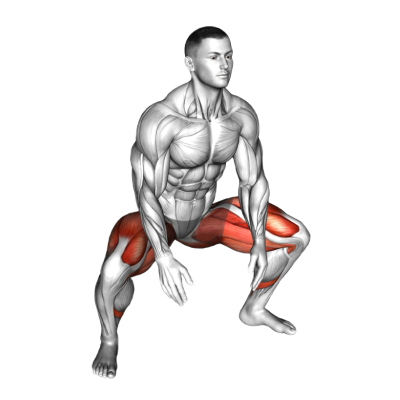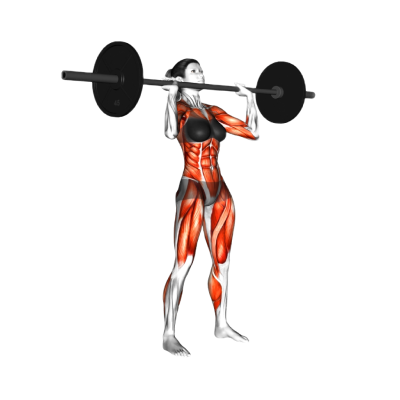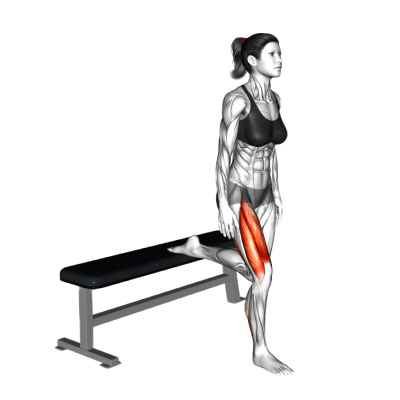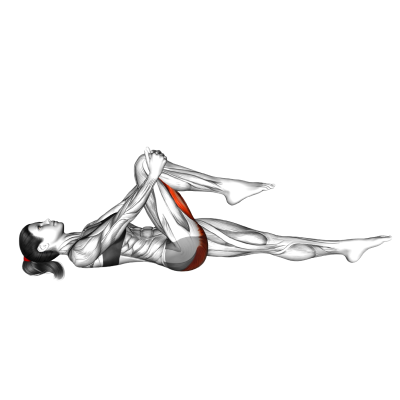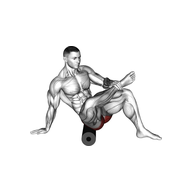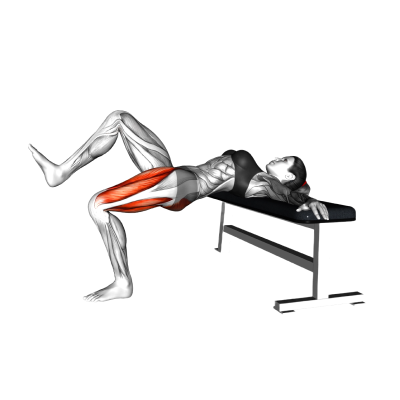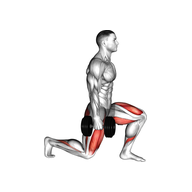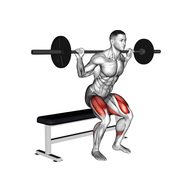What is a Reverse Lunge?
A reverse lunge is a lower-body exercise that you can use as an alternative to traditional lunges to target your glutes, hamstrings, quads, and core. As the name suggests, you step backward into your lunge to improve your balance and stability rather than stepping forward. Incorporating reverse lunges into your workout routine can enhance lower body strength, stability, and overall fitness.
How-to Do Reverse Lunge
- Stand with your body upright and hands on your hips. Your feet should be hip-width apart.
- Step backward with one leg and lower your body until your back knee comes in contact with the floor. Keep your torso upright and maintain balance.
- Step forward into the starting position.
Muscle Worked
Primary Muscle Groups


Hamstrings
The hamstrings flex your knees and extend and rotate your hips

Glutes
The glutes help you extend your thighs from the hips and drive you forward.

Quads
"Quads" refers to your quadriceps femoris muscles which flex your leg from the hip joint and extend your leg from the knee joint.Secondary Muscle Groups


Adductors
The adductors are the muscles on the insides of your thighs that move your legs toward the midline of your body

Calves
The calves are the muscles at the back of the lower part of your legsPro Tips
- Use Your Front Heel- Drive through the heel of your front foot when you’re coming back up to the starting position. This ensures your glutes and hamstrings are firing properly and doing most of the work, rather than overloading your knee or back.
- Let Your Core Assist- Engage your core and hold your body upright during your reverse lunges. This helps you keep your balance and stops you from leaning forward or knocking yourself off center.
Benefits of Reverse Lunge
- Joint-Friendly- Reverse lunges put less strain on your knees compared to forward lunges. Because you’re stepping backward, your front knee stays more stable. If you have known knee problems or you’re conscious of keeping your knees safe due to age or injury, this makes it a safer option for your knee issues.
- Balance and Coordination- Like they say, out of sight, out of mind. Stepping backward gives you an extra balance challenge since you can’t see what your foot is doing in space. This is a great way to build up your proprioceptive ability or your body’s ability to sense its position. Reverse lunges are great for training your balance and building strength in the small stabilizing muscles in your core and legs. Over time, this improves your coordination and you can translate this ability to sports or everyday movements.
Variations
The following exercises target the same primary muscles using the same equipment:
Alternatives
The following exercises target the same primary muscles using different equipment:
Warm Up & Cool Down
Warm Up
- Bodyweight Squats: Do 10–15 slow and controlled bodyweight squats, sending your hips back to drop your seat with feet hip-distance apart or wider. Keep your chest up and make sure your knees are tracking over your toes.
- Hip Flexor Stretch: Lunge one foot forward and press your hips forward for a hip flexor stretch. Raise your arms over your head to challenge your balance and work your core, leaning right, then switching to the left side. Hold for 15–20 seconds on each side.
- Leg Swings: Hold onto a wall for balance and swing one leg forward and back mindfully. Aim for at least 10–12 swings per leg to loosen your hips and hamstrings.
Cool Down
- Hamstring Stretch: Sit on the floor. Stick one leg out in front of you and bend the other. Reach toward your toes of the extended leg and hold the stretch for 20–30 seconds on each side.
- Figure Four Stretch: Lie on your back, cross one ankle over your opposite knee, and pull the bottom leg toward your chest. Hold your stretch for 20–30 seconds on each side. This will help release any tension in the glutes and hips from lunging.
- Child's Pose: Kneel on the floor, sit your hips back toward your heels, and extend your arms forward. Hold this position for 20–30 seconds to relax the lower back and stretch the hips.
FAQs


Get fit with Flex
Build muscle & lose weight fast for free.
Download for Free
Available on iPhone + Apple Watch

